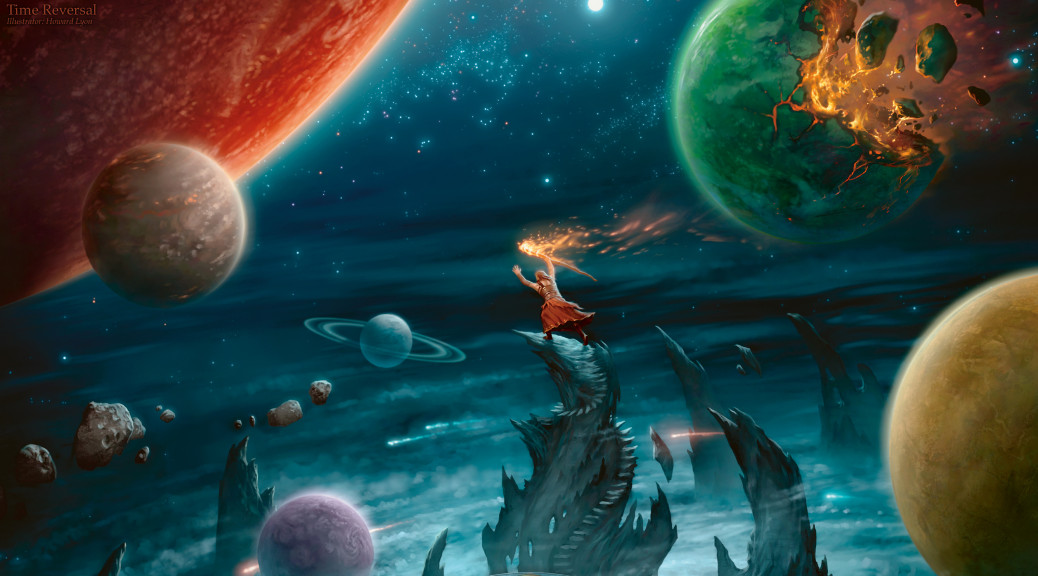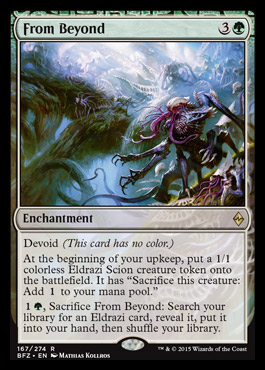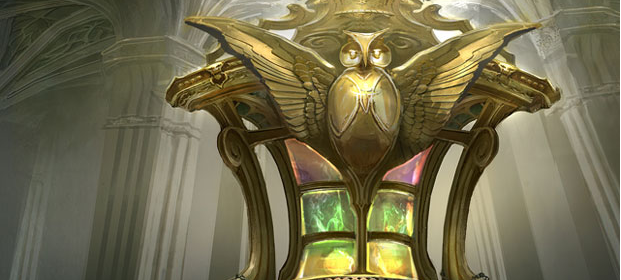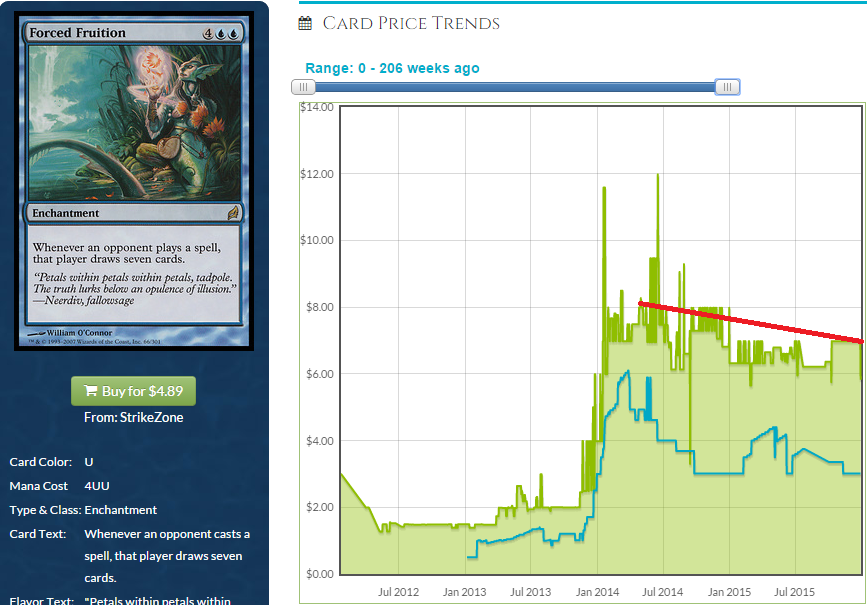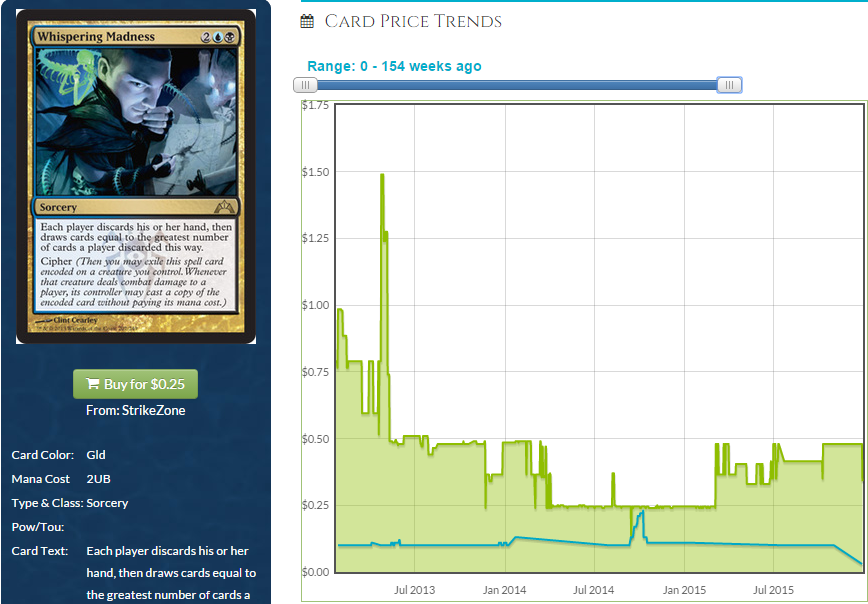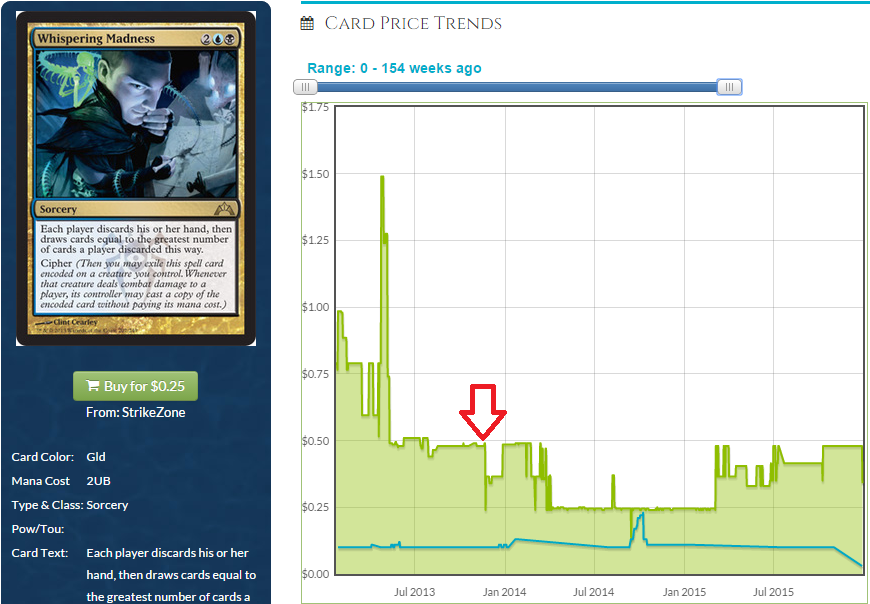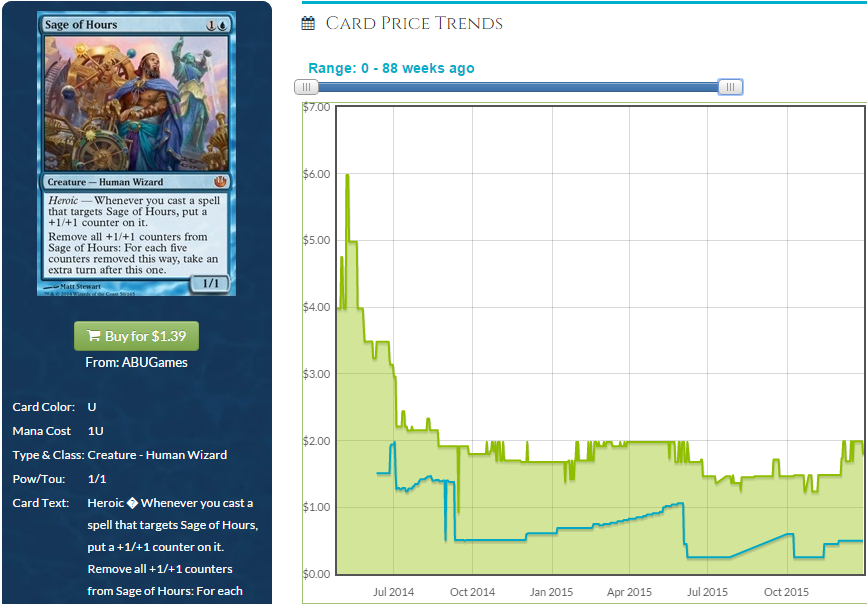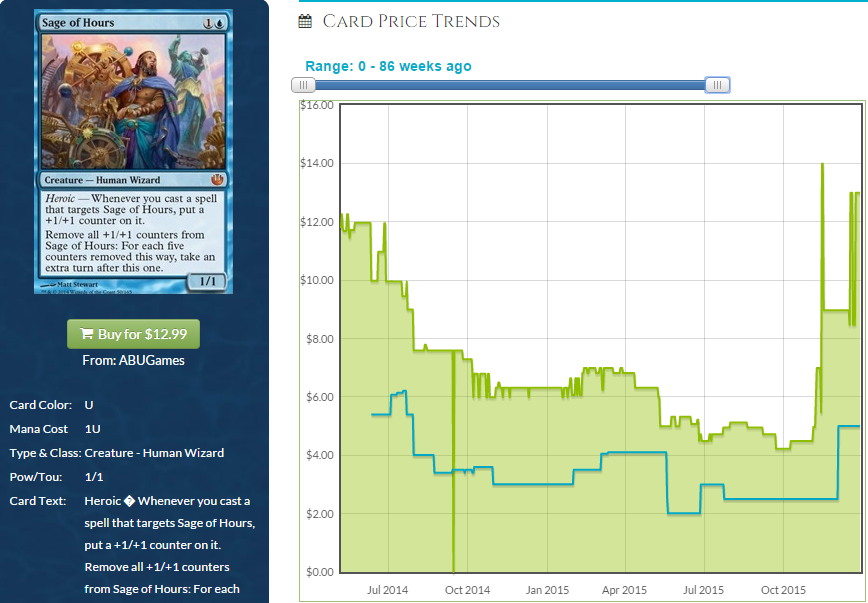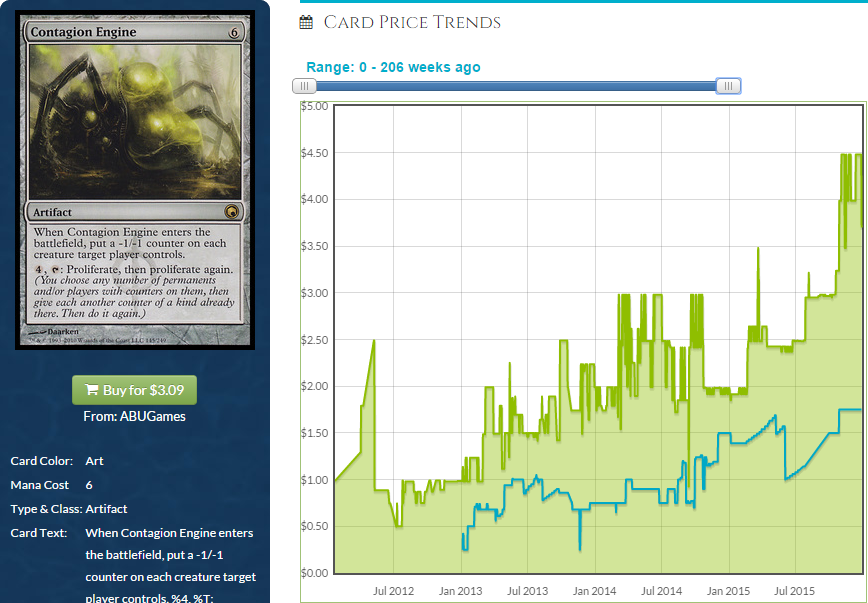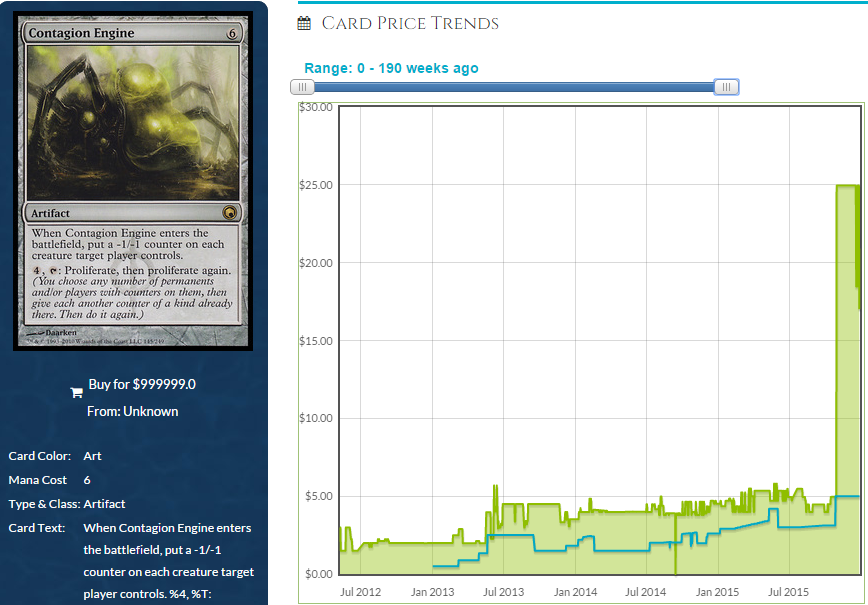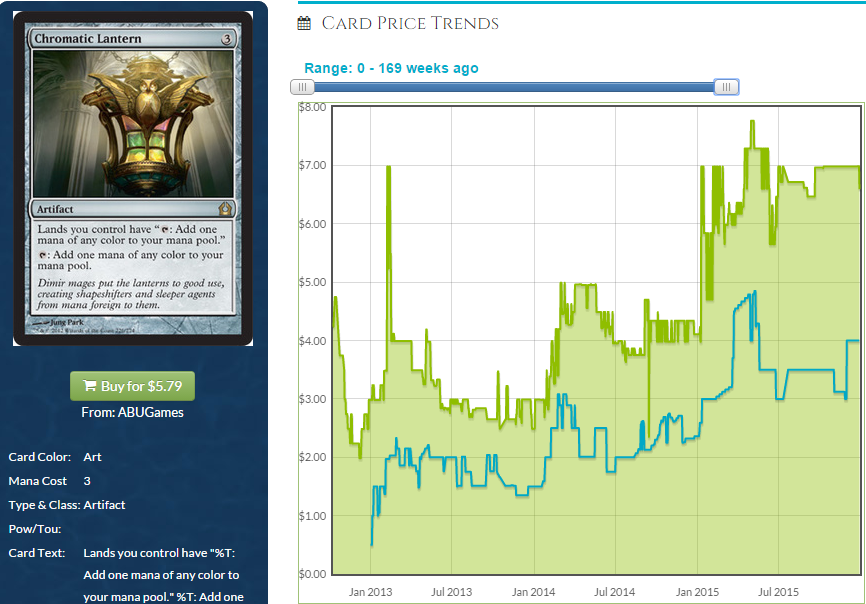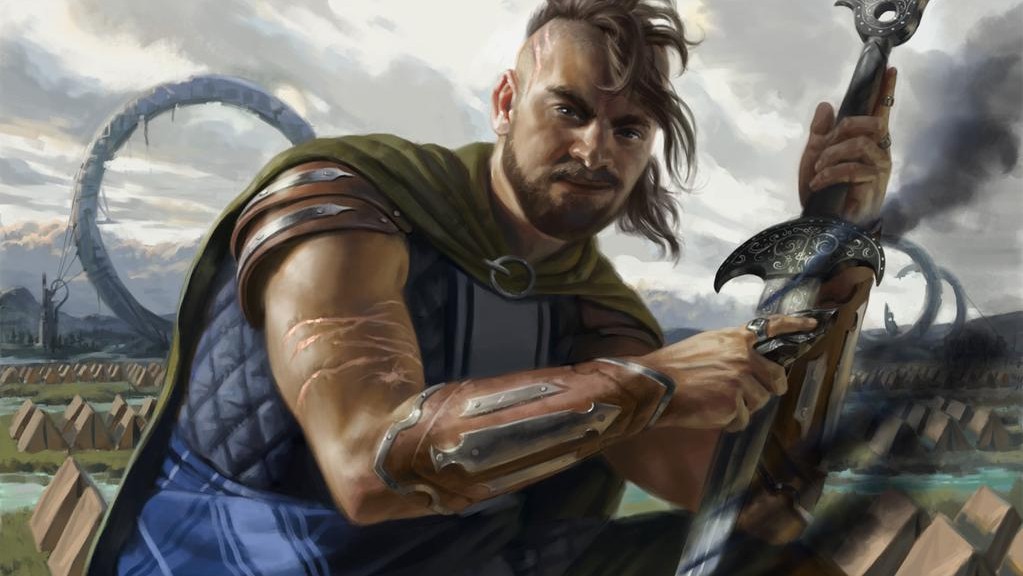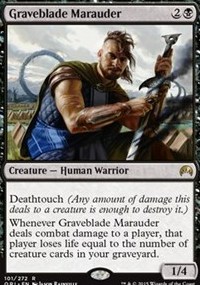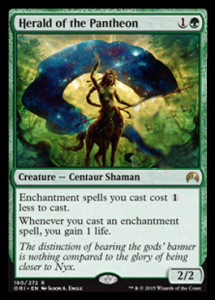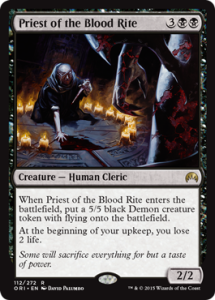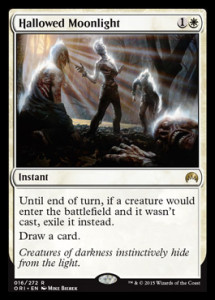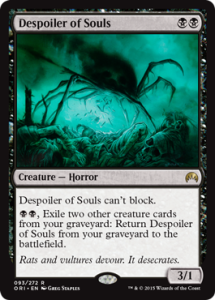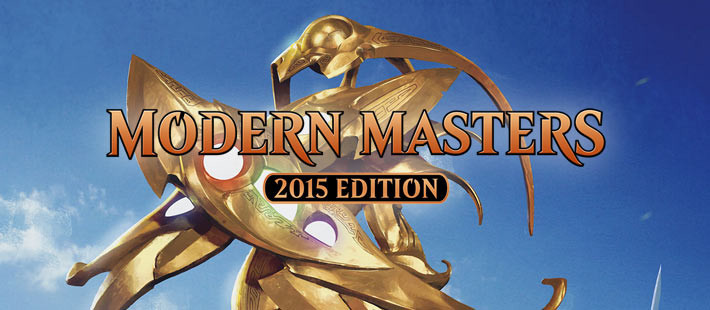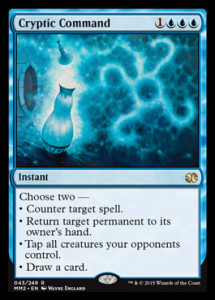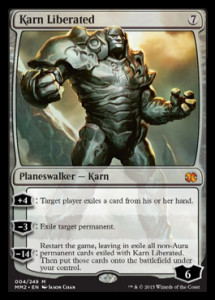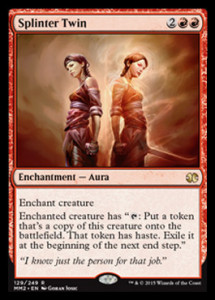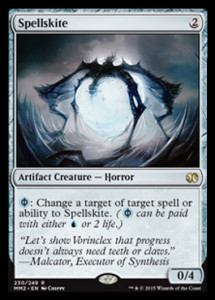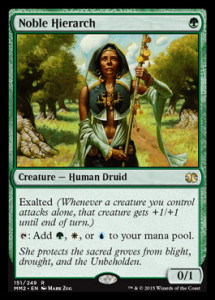Yeah, I know, list-style articles are a bit clickbaity. That said, there’s a ton to cover as we head into 2016, and with so many other authors writing great pieces wrapping up 2015, this feels like the best way to lay the groundwork for a big year for Magic.
The year of 2015 wasn’t bad, exactly, but it certainly didn’t continue the momentum of previous years. In many ways, this was expected. You can keep up monstrous growth year-over-year forever, and with the power level on sets being cut back—which I’m a fan of in terms of what it means for the game’s sustainability—it’s not exactly easy to push Magic sets these days. That leads to gimmicks like Expeditions (a fun set), but it also doesn’t sell sets forever the way Snapcaster Mage, Delver of Secrets, and Liliana of the Veil do. It’s not a huge surprise, then, that the numbers so far this year haven’t lived up to years past.
That means 2016 has to, if not increase, at least sustain where Magic is at. Shadows over Innistrad seems like a great way to do that, and we’ll see how the rest goes. On that note, let’s begin.
The Rise of the Colorless (Eldrazi)
Whether it’s Standard, where Eldrazi ramp was already a deck and figures to be greatly helped by Oath of the Gatewatch, or Modern, where decks built around exiling graveyards for Blight Herder and Oblivion Sower are taking off, Eldrazi are everywhere these days.
There’s no reason to expect that to change anytime soon. Eldrazi are going to be a force in Standard until rotation, and possibly even more of one after. I think we can look forward to at least nine more months of Eldrazi in Standard, and possibly 15 before Battle for Zendikar and Oath of the Gatewatch leave the scene. The biggest beneficiary to this is Ulamog, the Ceaseless Hunger, who is up from $13 to $16 and shows no signs of slowing down, but the big guy is bringing along plenty in his wake. Awakening Zone, for instance, has been on absolute if predictable tear (I’m proud of how well the community here on MTGPrice got out ahead of that one), and now Eldrazi Temple and Eye of Ugin are joining the fray (Edit: apparently these have spiked hard in the last two days. These will settle much higher than they were pre-spike, but the current inflated prices won’t hold, especially on Eye of Ugin).
Looking forward, I don’t think it’s unreasonable to expect Ulamog to top out around $30 if Eldrazi Ramp becomes top-tier, and Sanctum of Ugin and Shrine of the Forsaken Gods won’t stay bulk long. More long-term, From Beyond is a surefire bet for future gains.
The Summer 2016 Specialty Release Will Be Multiplayer-Focused
Let’s take a brief walk through history.
2009: Planechase
2010: Archenemy
2011: Commander
2012: Planechase 2012
2013: Modern Masters
2014: Conspiracy
2015: Modern Masters 2015
The Modern Masters sets throw it off over the past few years, but if you look back at the release history, it’s pretty clear that Wizards highly values a multiplayer-centric release during the summer. The annual Commander decks have taken some pressure off of this trend and made room for Modern reprints, but I have to believe that 2016 takes us back to multiplayer land.
My prediction? Archenemy 2. The inclusion of surge and other multiplayer-centric cards in Oath of the Gatewatch is not a coincidence, and I don’t believe that Matt Tabak’s seemingly random reference to the archenemy in this article is, either.
Archenemy 2016. Maybe.
The Price of Standard Will Fall
We know that it already is, as the price of Gideon falls and everything else evens out after the post-Battle for Zendikar spike. But while Jace will remain expensive, the other reason for an expensive 2015 Standard season—fetch lands—will rotate. Say what you want about WOTC’s design decisions over the past few years, but rarely have we seen a single dominant deck. Even Mono-Black Devotion, hated during its run in Standard, wasn’t the only deck to see success, just as Dark Jeskai isn’t the only deck doing so today. Of course, there’s another argument to be made that Modern-focused reprints (Thoughtseize, fetch lands) do Bad Things™ to Standard, but that’s a topic for another day.
Once fetch lands rotate, people won’t be able to put together whatever four colors they feel like playing, and that means more dissemination of the strongest cards in the format. When Shadows over Innistrad releases, I expect the two poles to be Jace decks and Ulamog decks. The difference between then and now is that neither deck will be running $200 in fetch lands just because it can. That should lead to a less-expensive Standard, and while it may not be low enough to satisfy everyone, it will be a step up from what we saw in the second half of 2015.
Emrakul Awaits on Innistrad
Fair warning: I’m not a flavor expert. But I do know storytelling, and it certainly seems like the Eldrazi are too all-encompassing to go away anytime soon. With Kozilek rising up to join Ulamog (RIP Lorthos), it certainly seems like the coalition to drive the Eldrazi off of Zendikar won’t be anything more than a stopgap. I don’t see our planeswalker buddies “killing” the Eldrazi in any way, and even if they do manage to force them off Zendikar, I doubt these monsters are gone forever. As Magic builds toward a coming blockbuster movie in the next few years, it makes sense for Wizards to keep the Eldrazi around—and notice that we haven’t heard from Emrakul in a while.
Furthermore, there’s speculation that Shadows over Innistrad is a reference to Shadows over Innsmouth, a Lovecraftian story that has Cthulhu—the baddest Eldrazi this side of the Multiverse—as its villain. I wouldn’t put it past Wizards to title the set after the novella on purpose, and have Emrakul fill the role of said shadow.
A Major Shakeup to the Modern Banlist
The announcement of the Stoneforge Mystic Grand Prix promo is the biggest giveaway here, if you want to read it that way. Personally, I could see it going either way. It wouldn’t shock me to see it included just as a “good promo” even if it wasn’t legal in Modern, thanks to its Legacy playability.
On the other hand, these cryptic words from the announcement article would seem to indicate otherwise: “I wonder how many promo Batterskulls we’ll see next to these new promo Mystics by springtime next year…” The ellipses was included in the original, and it’s no secret that Wizard likes to shake up the banlist before a Pro Tour. I think it’s probably better than 50-50 that Mystic sees an unban before Pro Tour Oath of the Gatewatch in February, and to answer Mike’s question about how many Batterskulls we’ll see: a lot.
Magic Will Gain Increased Acceptance as an eSport
This is a larger-picture issue, but one that is important to me and worth talking about. I work full-time in Magic, from managing the content on this website to working event coverage for Wizards. I also shoutcast League of Legends and other games regionally, and follow eSports as a whole pretty closely.
For those of you who may not know, eSports is blowing up. League is the largest video game in the world and is being injected with tons of money from venture capitalists right now. It’s sending salaries skyrocketing and quickly driving it toward the “only the big businesses can thrive.” Heroes of the Storm was on ESPN. CS:GO is getting a weekly league aired on TBS in 2016.
The field is, as a whole, going nuts right now. And there’s little reason to believe it will stop. With an incredibly young audience demographic right now, the money isn’t quite there yet. But as these people grow up watching competitive gaming instead of football or basketball, they’re going to retain those loyalties and preferences into adulthood. Ten years from now more, and more 30-year-olds will be watching videogames on TV, and the advertising money is going to truly start flowing.
Magic is doing its best to not be left behind. While video coverage won’t be as frequent in 2016, many people have characterized it as taking a step back to take a step up, and I hope that will be true. Magic may not be as visually exciting as some other games, but it has all the major attributes of other successful eSports, and the Pro Tour scene features both high-level play and a number of intriguing personalities. Viewership on Twitch has grown by leaps and bounds over the last few years—both in professional play and streaming—and I have high hopes for the digital and professional future of Magic. The 2016 year will be a key one for the game’s growth, because eSports are no longer a thing of the future: they’re a thing of the now, and Magic needs to continue to grow in this regard.
A bit over my word limit this week, but there you go! This year was a big one for me personally, and as I enter my first full year working full-time in Magic—and with my first kid on the way in May—I have big hopes for 2016.
See you on the other side.
Thanks for reading,
Corbin Hosler
@Chosler88 on Twitter/Twitch/YouTube
